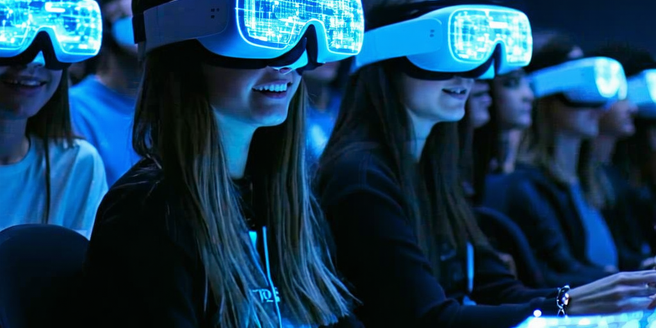Augmented Reality Glasses

The Evolution of Augmented Reality Glasses
Augmented Reality (AR) glasses have come a long way since their conceptual inception. Initially, AR glasses were bulky and limited in functionality, serving primarily niche markets such as military and industrial sectors. Over the years, with advances in technology and a growing interest in immersive experiences, these devices have evolved to become more compact, stylish, and consumer-friendly. Early products like Google Glass paved the way but faced challenges in mainstream adoption due to privacy concerns and limited applications. However, the relentless pursuit of innovation has led to the development of more sophisticated and versatile AR glasses. Today, they are equipped with high-resolution displays, sophisticated optics, and seamless integration with smartphones and other devices, making AR glasses increasingly relevant in both personal and professional contexts.
Key Features of Modern AR Glasses
Modern AR glasses are packed with advanced technological features designed to enhance user experience and utility. One standout feature is the use of high-resolution, transparent displays that overlay digital information onto the real world, enabling users to interact with their environment in new ways. Many models now include integrated cameras for capturing and recognizing visual data, along with sensors to detect user movements and surroundings. Additionally, connectivity features such as Bluetooth and Wi-Fi allow seamless integration with mobile devices, ensuring users stay connected. Battery life has also seen significant improvements, allowing for extended use without frequent charging. Voice control and gesture recognition are increasingly common, providing intuitive ways to interact with digital content hands-free. These features collectively transform AR glasses from simple viewing devices into versatile tools for work and play.
How AR Glasses are Transforming Industries
AR glasses are revolutionizing a variety of industries by offering innovative solutions and efficiencies. In healthcare, they are used for complex surgical procedures, providing real-time data and imaging alongside the surgeon’s view. In manufacturing, AR glasses facilitate remote assistance and complex assembly tasks by overlaying instructions directly onto the equipment. Retail and e-commerce sectors utilize AR for virtual try-ons, enhancing customer experience and personalization. In the automotive industry, AR glasses assist designers and engineers by visualizing and simulating vehicle prototypes in real environments. Education is another beneficiary, as AR glasses offer immersive learning experiences, bringing historical events or scientific concepts to life. These applications demonstrate the transformative potential of AR technology, allowing industries to innovate, reduce errors, and enhance productivity.
The Challenges Facing AR Glasses Technology
Despite the significant progress made in AR glasses technology, several challenges persist. One major issue is the device’s form factor, as making them lightweight and stylish while incorporating advanced technology is a complex task. Privacy concerns also pose a challenge, as AR glasses with integrated cameras may capture sensitive information inadvertently. There is a constant demand for improved battery life to support intensive usage throughout the day. Moreover, software and application ecosystems need to be robust enough to provide meaningful and diverse use cases for users. High costs remain a barrier to widespread adoption, limiting access primarily to early adopters and professionals. Addressing these challenges requires ongoing innovation and collaboration among technology developers, designers, and regulatory bodies to ensure that AR glasses can fulfill their potential.
The Future of Augmented Reality Eyewear
The future of augmented reality eyewear is poised to be transformative as technology continues to progress. As AR glasses become more refined, we can expect them to integrate seamlessly into everyday life, offering new possibilities for entertainment, communication, and interaction with digital content. Developments in artificial intelligence and machine learning will likely enhance the contextual understanding of these devices, creating more personalized and adaptive experiences. With improvements in miniaturization and display technology, future AR glasses will become indistinguishable from regular eyewear. This will drive broader acceptance and adoption across various demographics. Moreover, as costs decrease, accessibility will increase, leading to ubiquitous use in personal, educational, and professional settings. The convergence of AR eyewear with other emerging technologies like 5G and blockchain could unlock groundbreaking applications yet to be imagined.
Choosing the Right Pair of AR Glasses
Selecting the ideal pair of AR glasses depends on several factors tailored to the user’s needs and lifestyle. Functionality is paramount; some users might prioritize immersive gaming experiences, while professionals may require precise data overlays or collaboration tools. Consideration of compatibility with existing devices and ecosystems is also crucial, ensuring seamless integration with smartphones or other smart gadgets. Comfort and style play significant roles in the user’s daily usage, with options ranging from sleek, minimalist designs to more feature-rich, bulkier models. Battery life and durability are practical concerns, especially for outdoor activities or prolonged use in professional settings. Potential buyers should also weigh the importance of privacy controls and data security measures. By carefully evaluating these aspects, users can choose AR glasses that enrich their digital experience while aligning with their personal preferences.